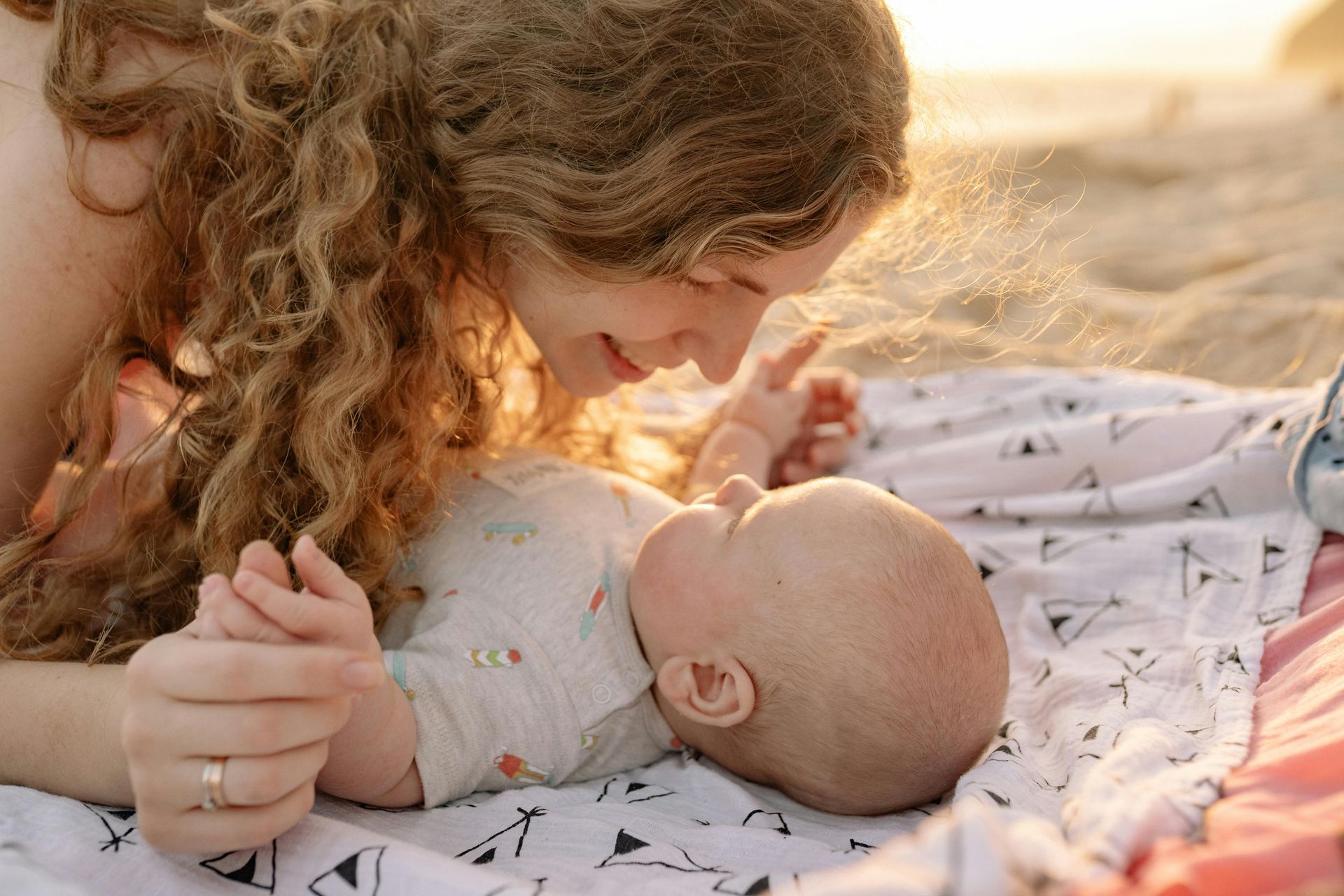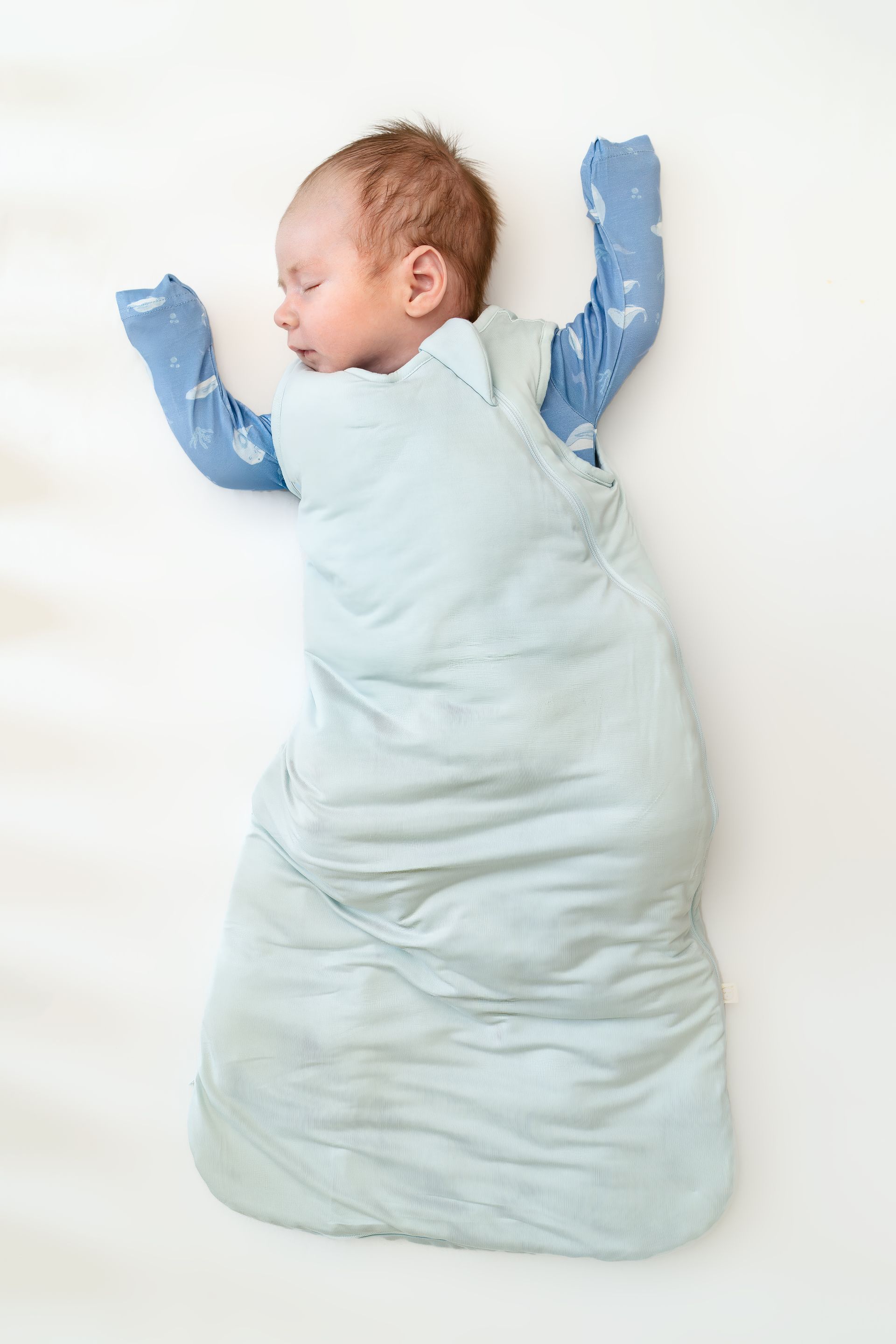Top 4 Tips for Buying the Right Car Seat in 2025 — UAE Parents’ Guide
Sophie Huang • September 29, 2025
Choosing a car seat is one of the most important decisions you’ll make as a parent. It’s not just about convenience — it’s about giving your child the best protection on every journey.
In the UAE, where we drive long distances, face busy roads, and deal with extreme heat, the right car seat matters more than ever. But with so many options, how do you know which one to choose?
Here are our top 4 tips to make car seat shopping easier
— and safer.
1. PRIORITIZE SEATS THAT UNDERGO THE TOUGHEST CRASH TESTING
Not all car seats are created equal. Many parents think if a seat is “legal,” it must be safe — but that’s not always true.
- ECE R44: The most basic standard, now phased out in Europe.
- ECE R129 (i-Size): Stricter testing with better head, neck, and side-impact protection.
- The Swedish Plus Test: The toughest crash test in the world — and the gold standard.
What makes the Swedish Plus Test
so important?
- It’s the only test that measures neck forces on a child’s body in a crash.
- Seats that pass prove they can keep neck loads below dangerous limits — a key factor in preventing serious injury.
- Many car seats fail completely under this extreme test, which shows just how high the bar is.
👉 If a car seat has passed the Swedish Plus Test, you can be confident it offers the highest level of safety
for your child.
💡 Remember: Legal does not always mean safe. Go beyond the minimum.
2. CONSIDER YOUR CHILD'S HEIGHT, WEIGHT, AND AGE — EVEN THE SMALLEST ONES
Every child grows differently, and size matters when it comes to safety.
- Preemies and smaller babies: Standard carriers often don’t provide the right fit. They need extra support for the head, neck, and body, plus proper harness positioning.
- Twins or multiples: Planning seating for two (or more) at once requires careful choice so every child gets the safest setup.
As children grow, their height and weight percentiles
determine how long a seat will last. We recommend car seats with at least a 25kg weight limit and 125cm height limit, which allow for extended rear-facing travel.
Why rear-facing? Research shows it is up to 5 times safer
than forward-facing for children up to 6–7 years old.
- Better crash force distribution across the strongest part of the body.
- Superior head and neck protection, preventing the whip-forward motion that can cause spinal injury.
- Cocoon-like shell protection against front and side impacts.
💡 Bonus for UAE parents: The BeSafe Go Beyond
with Preemie Inlay
was designed with neonatal nurses to support even the tiniest babies. It features a removable wedge for better harness fit and breathable mesh fabric — keeping your baby safe and cool
in our hot weather.
3. MATCH THE CAR SEAT TO YOUR CAR AND LIFESTYLE
Your car seat needs to fit not just your car — but your daily routine.
- Multiple cars? Choose a seat that’s easy to install/uninstall.
- Growing family? Invest in a seat with a long lifespan that can be passed down.
- Seat placement? Consider if it will go behind the passenger, in the middle, or side by side with another child seat.
- Bigger families? Narrow but safe seats can fit 3-across or work well in 7-seaters, without compromising protection.
Example from our family setup:
- Mummy’s car: BeSafe Flex Fix 2 for Sofia (8y) + BeSafe Stretch for Leo (5y).
- Daddy’s car: Axkid One3 for Leo + BeSafe Flex Fix 2 for Sofia. The Axkid One3 was chosen because Daddy often removes the seat, and installation takes under 30 seconds.
👉 Key takeaway: The “best seat” isn’t the one your friend uses — it’s the one that fits your child, your car, and your lifestyle.
4. DON'T COMPROMISE — BUY FROM A CHILD CAR SEAT SPECIALIST
Buying from a specialized retailer
ensures peace of mind:
- They recommend a seat that fits your child, car, and routine.
- They install it correctly and show you how.
- If the seat doesn’t fit, they won’t install it — and they’ll help you find one that does.
- They’ll reinstall it whenever you need, for example when changing cars, at no extra cost.
At Safety On Board, we offer 1-1 car seat consultation
and hands-on support to make sure your child rides safely every time.
FINAL THOUGHTS
A car seat isn’t just another baby item — it’s life-saving equipment. Whether you’re bringing home a preemie, juggling twins, or moving a big kid into a booster, the right seat + the right support makes all the difference.
If you’re unsure where to start, contact us
and book a consultation with us. We’ll help you find the perfect fit for your child, your car, and your family.
Because every child in the UAE deserves the safest ride
💛
Sophie Huang is the founder of Safety on Board, the UAE’s first child car seat specialist. She is also a mom of 2 and an internationally certified car seat expert. With a passion for keeping children as safe as possbile on UAE road, she guides parents in choosing and installing the safest car seats. Sophie believes safety can be simple, stress-free, and empowering for every parent.

There’s something magical about a beach holiday — the sound of waves, salty air, and the promise of slow days in the sun. But let’s be honest: traveling to the beach with a baby isn’t exactly a vacation unless sleep is part of the equation. Whether you're heading to a resort, renting a seaside villa, or visiting family by the coast, here’s how to set your baby up for restful sleep — so everyone gets to enjoy that ocean breeze. Step 1: Know That Sleep Needs Don’t Take a Holiday Babies are creatures of habit. Their little bodies thrive on rhythm and predictability — even on vacation. But that doesn’t mean you can’t have fun or go with the flow! It just means that your baby’s sleep needs are still there, and the better prepared you are, the easier it will be to keep things (mostly) on track. Step 2: Your Beach Baby Sleep Packing List Here’s your ultimate baby sleep packing list for a beach trip, broken down by category: Sleep Environment Essentials : Portable travel crib or bassinet – Choose one your baby is already familiar with if possible. Fitted sheets – Bring 2-3 just in case of sand, spills or spit-up. Also bring a gently used one to remind baby of home as he/she adjusts to the new sleep environment. Portable blackout blinds – Beach homes and rentals often have light, sheer curtains. White noise machine or app – Helps block out unfamiliar sounds like waves (yes, they can be loud!) or street noise. Baby monitor (if you’ll be in a larger space or stepping outside during naps). For more on the ideal sleep environment, have a read here . Comfort + Routine : Lovey or comfort object (if age-appropriate and safe for sleep). Sleep sack – Choose a breathable, summer-weight one. Favorite bedtime book – Familiarity brings comfort. Pacifiers – Always bring extras! Nightlight – A soft, warm one if needed for feeds or changes during the night. Weather + Climate Considerations : Lightweight, breathable pajamas – Think cotton or bamboo Fan – If your rental lacks good airflow or AC Bonus Tip: Have a “Nap-on-the-Go” Kit **For beach days that cut into nap time: Clip-on stroller fan Stroller or baby carrier your baby can sleep in Portable white noise machine Extra sun hats + baby-safe sunscreen (for after 6 months old) Step 3: Keep the Routine (Even on the Coast) Try to mirror your bedtime routine as closely as you can. If you usually do bath → PJs → book → feed → sleep, stick with it — even if it’s a quick version. Babies love the predictability, and it helps signal that it’s time to wind down, even in a new environment. Also, aim for naps in a darkened room when possible, especially after a stimulating beach outing. And if one nap has to happen in the stroller under a palm tree? That’s totally okay. Just go back to the routine as soon as you can. Getting There: Travel Day Tips Time your departure around naps if possible Use familiar sleep items (like the sleep sack or pacifier) during flights or drives Offer extra feeds — travel is dehydrating, especially in hot weather Keep expectations flexible – sleep may not be perfect, and that’s fine Beach trips with a baby can be full of joyful memories and restful nights — as long as you plan for sleep. With the right gear and mindset, your little one can stay well-rested and content, giving you more time to soak up the sun (or at least drink your coffee while it’s still warm!). And remember: sleep doesn’t have to fall apart just because you’re away from home. If you ever feel stuck or unsure about how to adjust things before, during, or after a trip, I’m here to help you build a personalized plan that fits your family’s travel style. Book your discovery call here .

October is SIDS Awareness Month, dedicated to raising awareness about Sudden Infant Death Syndrome. It’s a time to educate parents and caregivers on safe sleep practices that can reduce the risk and help protect our little ones.. At Hushabye, safety is at the heart of our brand. Our focus is on providing parents with safe and high-quality baby sleepwear, such as sleep bags, that offer a safer alternative to traditional blankets. What is a baby sleep bag? A baby sleep bag, also known as a wearable blanket or sleep sack, is a specially designed garment for infants and young children to wear during sleep. The primary purpose of a sleep bag is to keep the baby warm and comfortable, but it also serves as a safe and convenient alternative to traditional blankets and quilts in a crib or cot.

In the hustle and bustle of modern life, sleep often takes a back seat to other priorities. Yet, the importance of sleep for mental health cannot be overstated, especially for parents and their children. From infancy through adulthood, sleep plays a crucial role in maintaining emotional stability, cognitive function, and overall well-being. Let’s delve into the intricate relationship between sleep and mental health, exploring its significance for both parents and kids. Understanding Sleep: The Foundation of Mental Health Sleep is not merely a passive state of rest; it's a dynamic process that facilitates vital functions for physical and mental health. During sleep, the brain consolidates memories, processes emotions, and regulates various physiological processes. For children, especially infants and toddlers, sleep is paramount for healthy growth and development. It's during sleep that their brains form crucial neural connections, essential for learning and behavior regulation. Sleep and Parental Mental Health For parents, particularly those with young children, sleep deprivation is often a common occurrence. The demands of caring for a newborn or attending to the needs of a growing child can disrupt sleep patterns, leading to chronic sleep deficits. This chronic sleep deprivation can take a toll on parental mental health in several ways: Increased Stress and Anxiety : Sleep-deprived parents often experience heightened stress levels and anxiety. The constant fatigue and inability to get adequate rest can exacerbate feelings of overwhelm and tension. Impaired Cognitive Function : Lack of sleep impairs cognitive function, making it difficult for parents to concentrate, make decisions, and problem-solve effectively. This can further contribute to feelings of inadequacy and frustration. Mood Disorders : Chronic sleep deprivation is linked to an increased risk of mood disorders such as depression and irritability. Parents may find themselves more prone to mood swings and emotional instability, impacting their ability to nurture a positive environment for their children. Strained Relationships : Sleep deprivation can strain relationships, leading to conflicts and communication breakdowns between partners. This can create additional stressors, further exacerbating mental health challenges. Sleep and Child Mental Health Just as sleep is crucial for parental well-being, it's equally essential for children's mental health and development. Adequate sleep is associated with numerous benefits for children, including: Emotional Regulation : Sufficient sleep plays a vital role in emotional regulation, helping children manage their feelings and behaviors effectively. Children who get enough sleep are often more resilient to stress and less prone to mood disturbances. Cognitive Development : Sleep is essential for cognitive development in children, as it supports learning, memory consolidation, and problem-solving skills. A well-rested child is better equipped to succeed academically and socially. Behavioral Health : Sleep disturbances in children are closely linked to behavioral problems such as hyperactivity, impulsivity, and aggression. Establishing healthy sleep habits early on can significantly reduce the risk of such issues. Reduced Risk of Mental Health Disorders : Research suggests that inadequate sleep during childhood is associated with an increased risk of mental health disorders later in life, including anxiety, depression, and ADHD. Strategies for Promoting Healthy Sleep Given the critical role of sleep in mental health for both parents and children, it's essential to prioritize sleep hygiene and establish healthy sleep habits. Here are some strategies to promote better sleep: Consistent Bedtime Routine: Establish a consistent bedtime routine for both parents and children. A calming bedtime routine signals to the body that it's time to wind down and prepare for sleep. Create a Sleep-Conducive Environment: Ensure that the bedroom environment is conducive to sleep . This includes keeping the room dark, quiet, and at a comfortable temperature. Limit Screen Time: Minimize screen time, especially before bedtime, as exposure to screens can interfere with melatonin production and disrupt sleep patterns. Encourage Physical Activity: Regular physical activity during the day can promote better sleep at night. Encourage children to engage in active play and ensure that parents incorporate exercise into their daily routine as well. Healthy Sleep Associations: Help children develop healthy sleep associations by associating bedtime with soothing activities such as reading or gentle music. Practice Mindfulness and Relaxation Techniques: Teach children and parents relaxation techniques such as deep breathing exercises or guided imagery to promote relaxation and stress relief before bedtime. Seek Professional Help When Needed: If sleep problems persist despite implementing these strategies, seek guidance from a healthcare professional or sleep specialist. You can always schedule a discovery call with me to discuss whether working with me will help your little one get a better night sleep. For parents and children alike, prioritizing sleep is essential for maintaining emotional well-being, cognitive function, and overall health. By recognizing the importance of sleep and implementing strategies to promote healthy sleep habits, parents can nurture a positive sleep environment for themselves and their children, laying the foundation for a lifetime of mental wellness.


